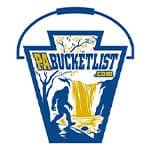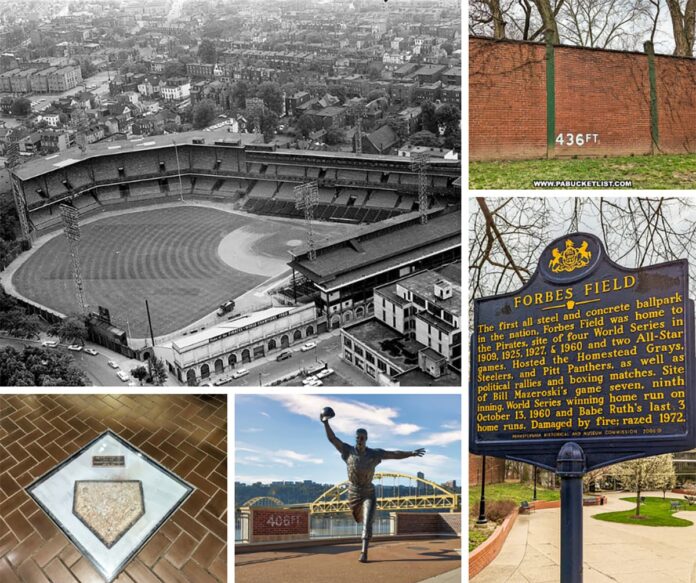
If you’re looking for information about visiting the remnants of historic Forbes Field in Pittsburgh, you’re in the right place!
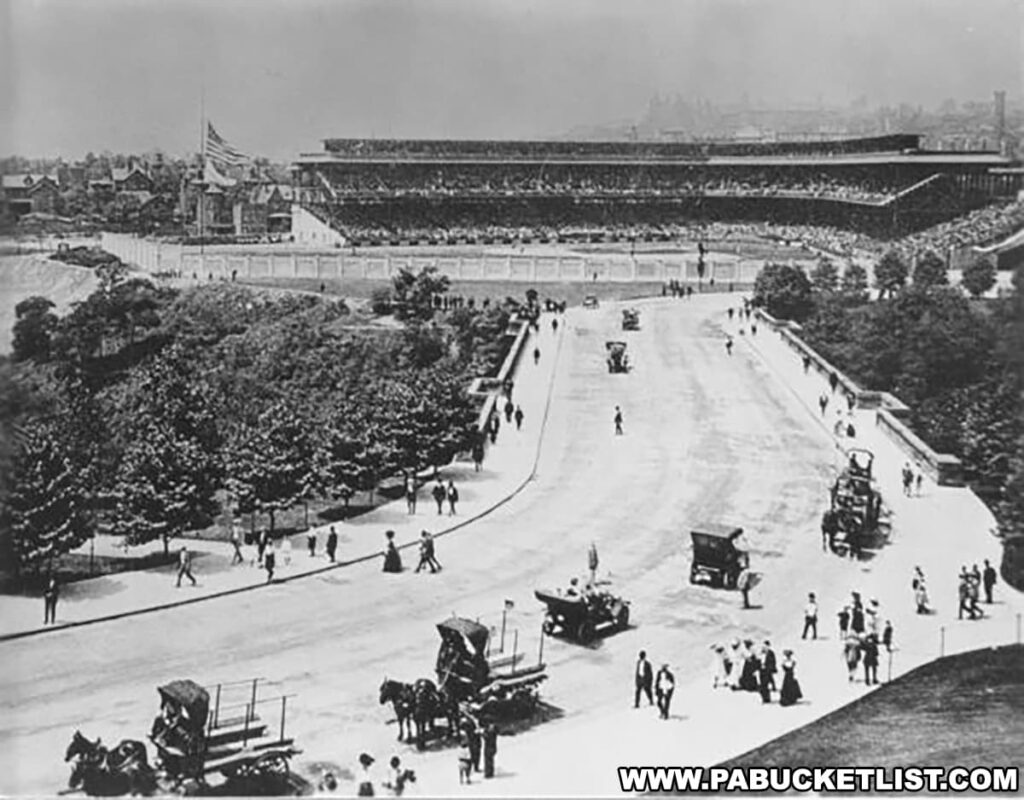
Forbes Field, constructed in 1909, was the one-time home of the Pittsburgh Pirates, Pittsburgh Steelers, Homestead Grays, and Pitt Panthers.
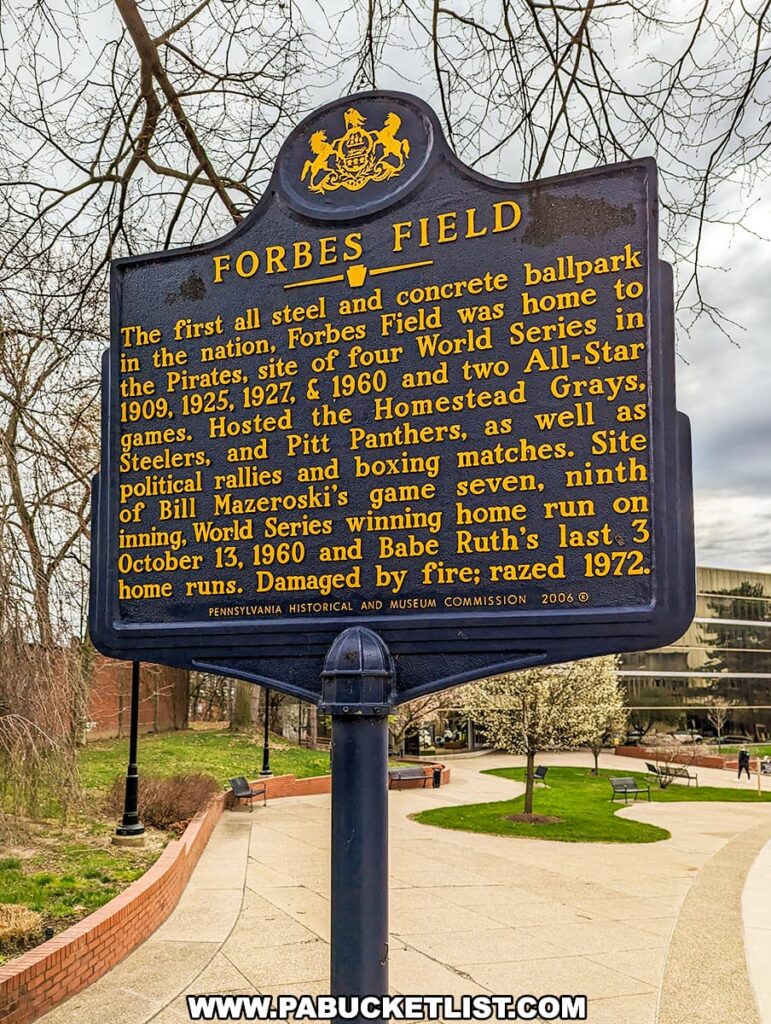
Distinguished as one of the first steel and concrete stadiums, this architectural choice promised longevity, distancing Forbes Field from the wooden ballparks common at the time.
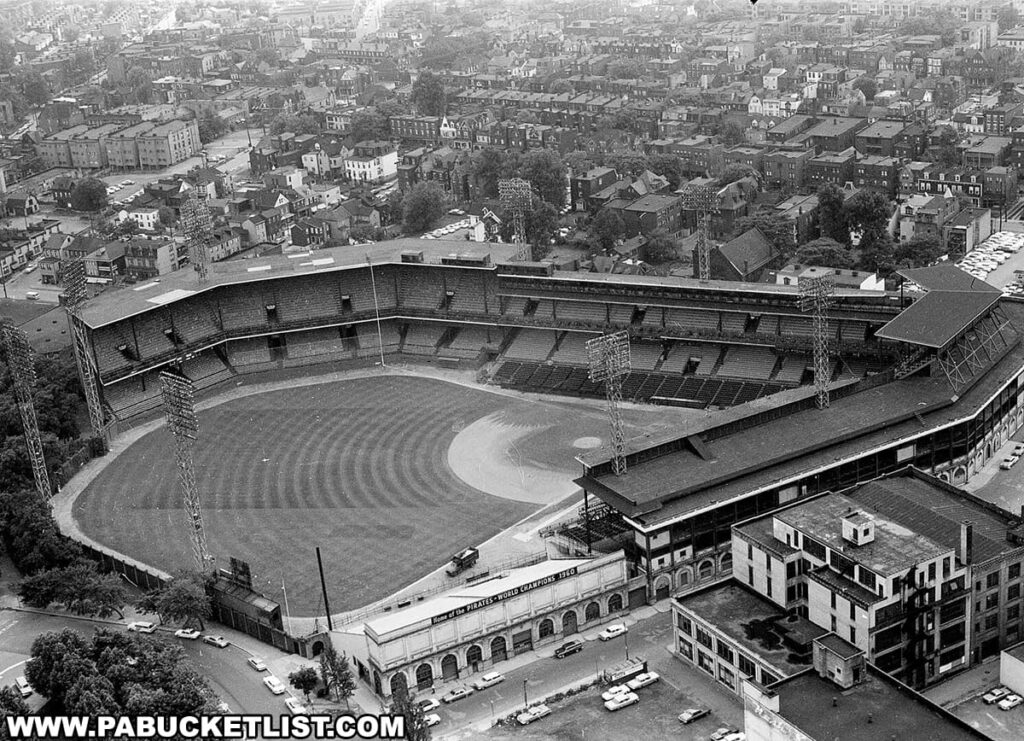
The project was launched by Pittsburgh Pirates’ owner Barney Dreyfuss, and the stadium was built in just 122 days.
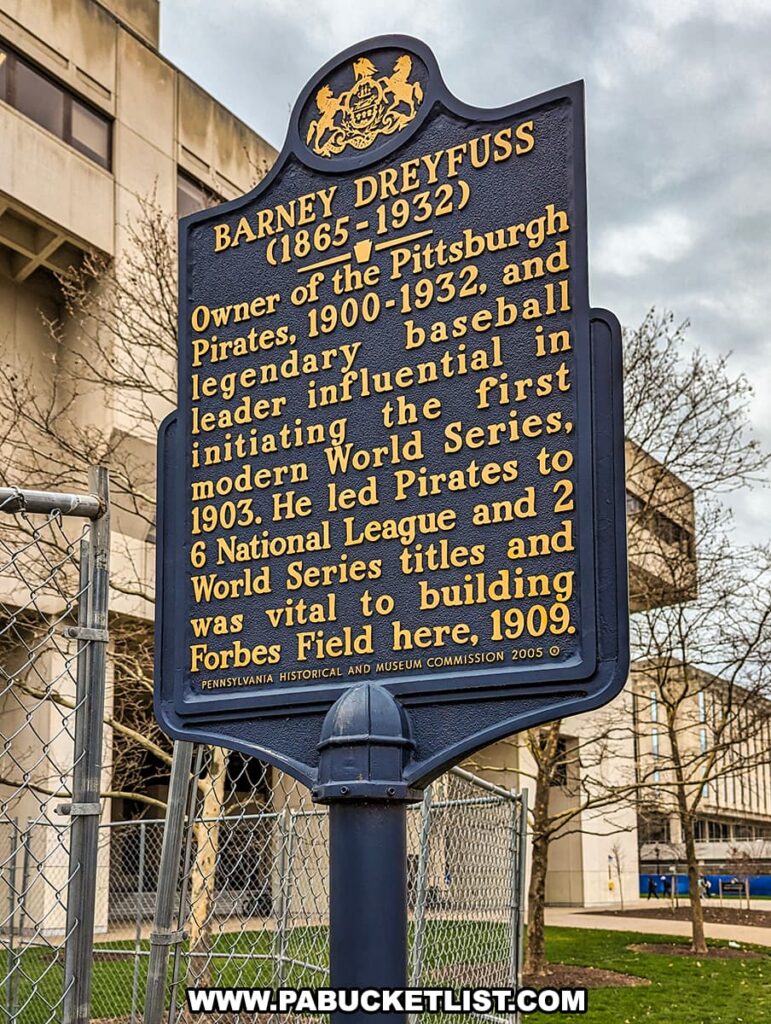
It witnessed numerous historic moments, including Bill Mazeroski’s Game 7 World Series-winning homer in 1960.
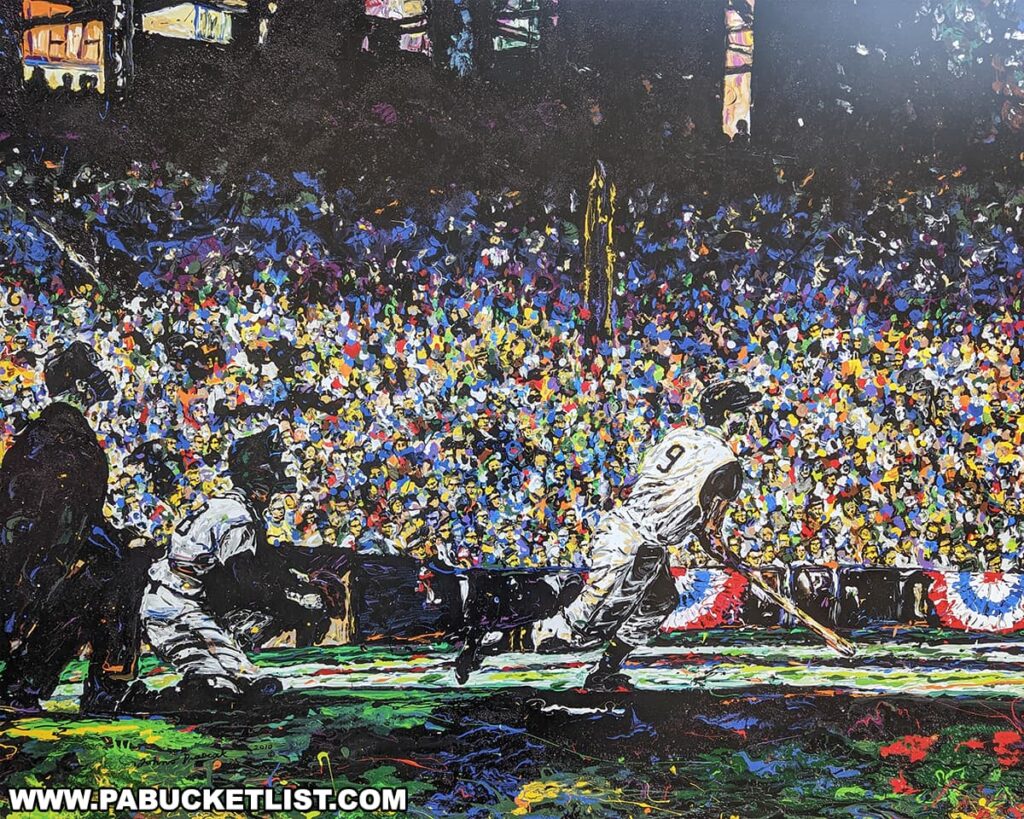
Although Forbes Field was demolished in 1972, parts of its structure linger, providing a tangible link to its storied past.
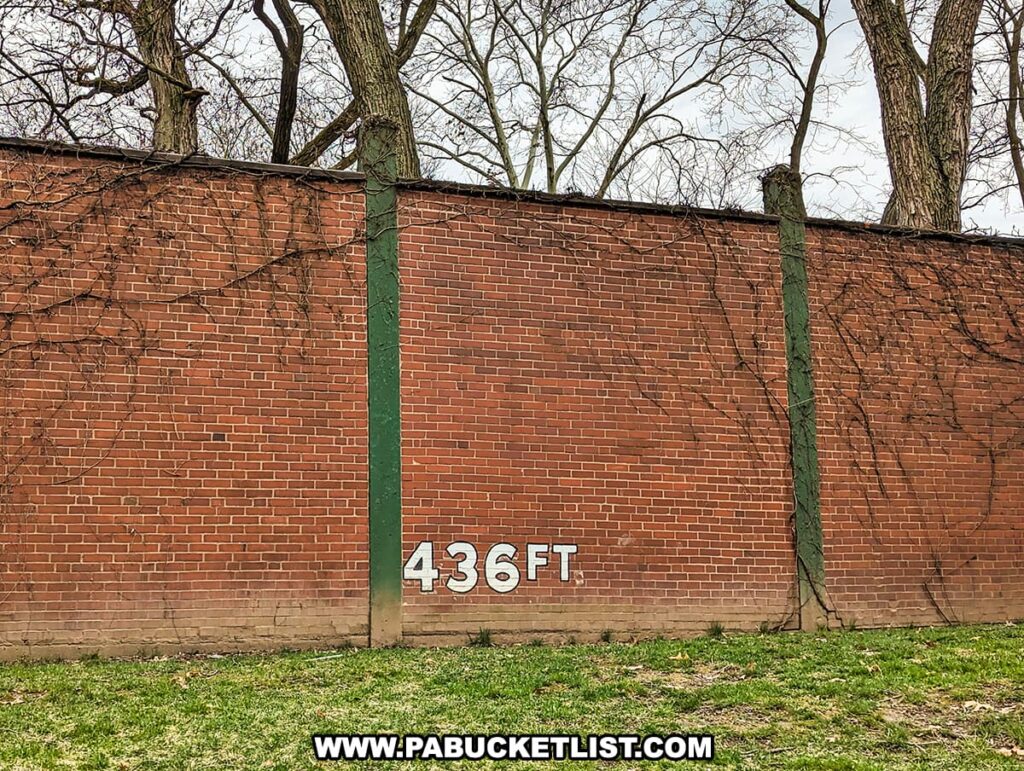
Remnants of Forbes Field in Oakland
Much of what was once the infield and bleachers section of Forbes Field in now covered by the University of Pittsburgh’s Mervis Hall and Posvar Hall.
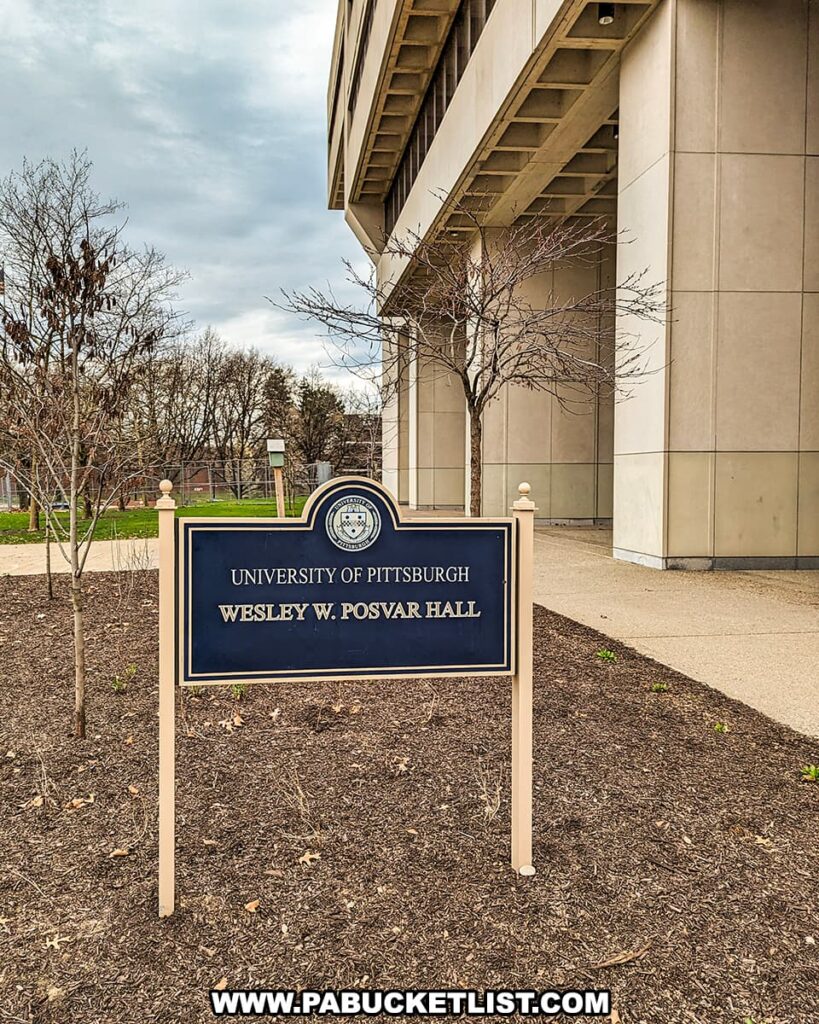
However, the brick wall in left-center and center field still stands in its original location, accompanied by the stadium’s flagpole.
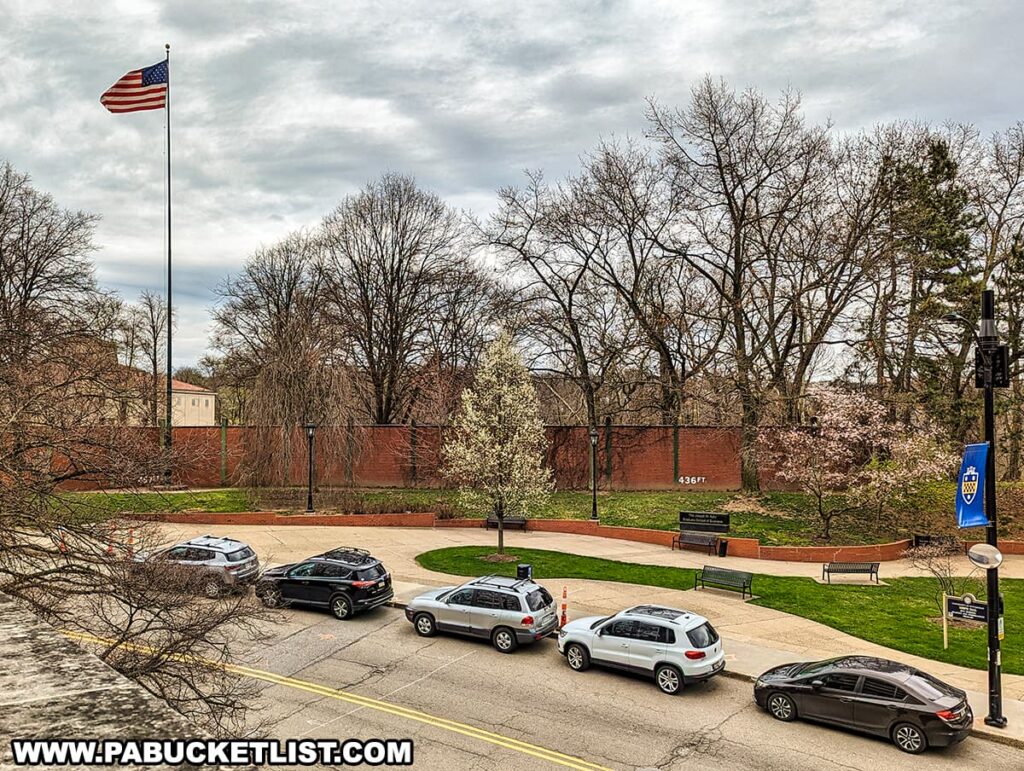
And if you walk into Posvar Hall on the ground floor, you’ll find the home plate used in the stadium’s final game, preserved in lucite.
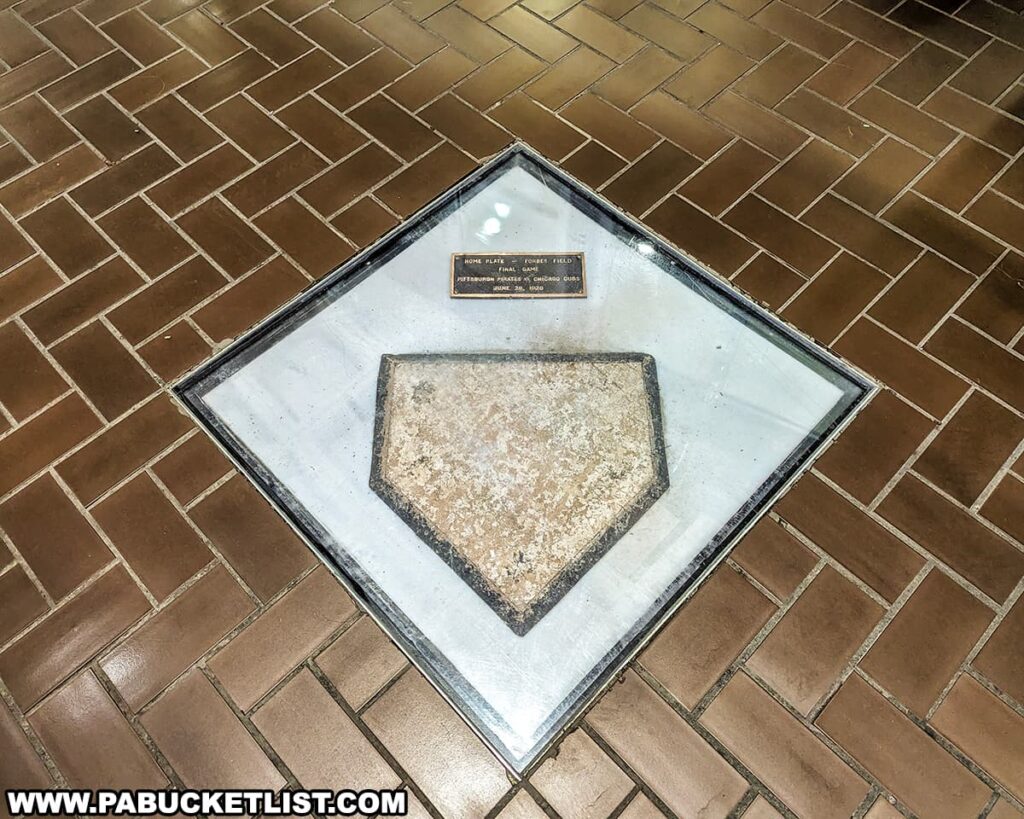
For the record, the Pirates won the last game played at the 62-year-old stadium with a 4–1 victory over the Chicago Cubs, the same team they lost to in the first game ever played at Forbes Field to back in 1909.
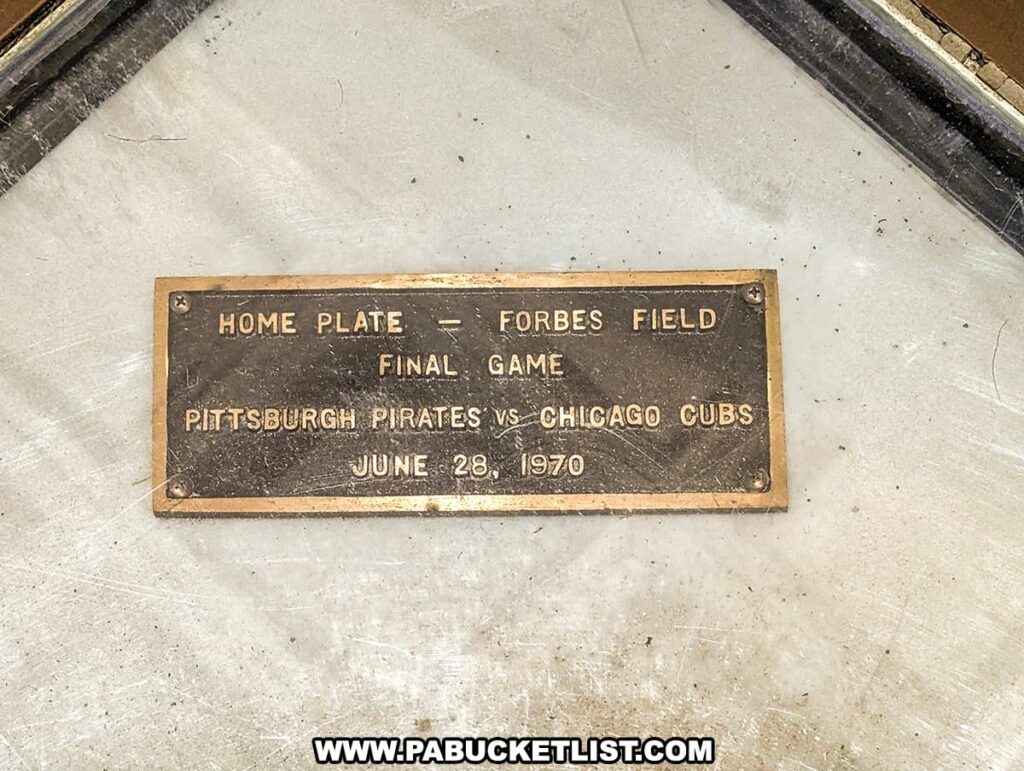
Hanging on the wall above the home plate display you’ll find the famous photo taken from the University of Pittsburgh’s Cathedral of Learning, showing fans watching the 1960 World Series at Forbes Field from high above.
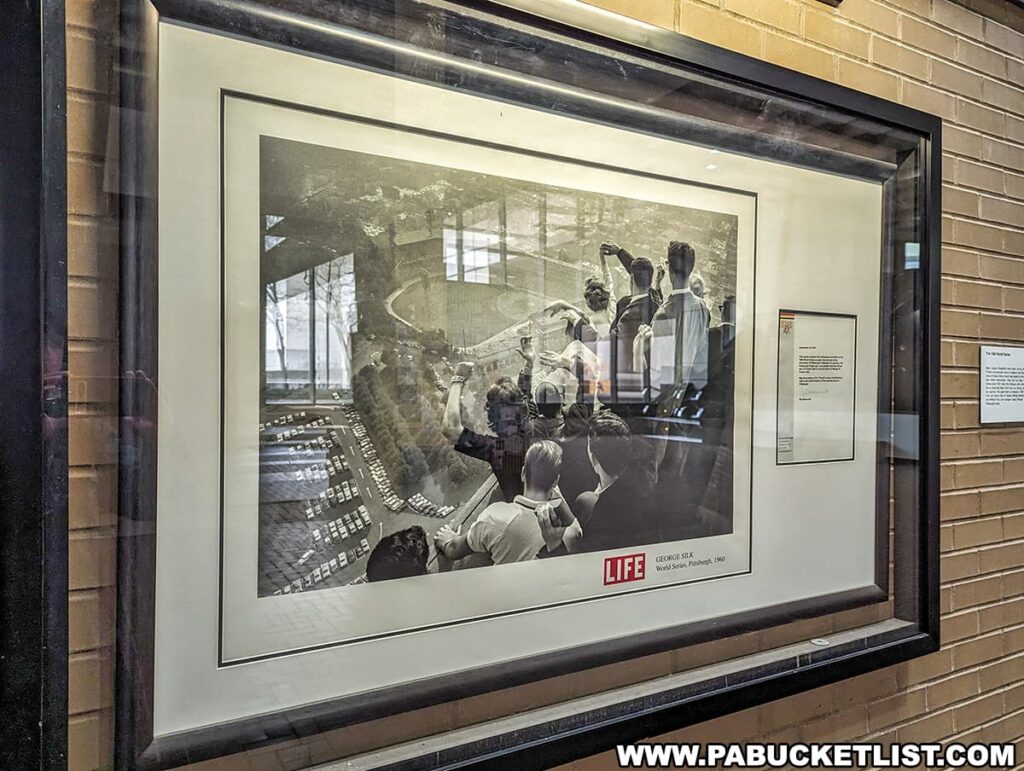
If you walk over to the Cathedral of Learning and take the elevator up to the 36th floor, you can recreate this view and look down on the remnants of Forbes Field outfield wall.
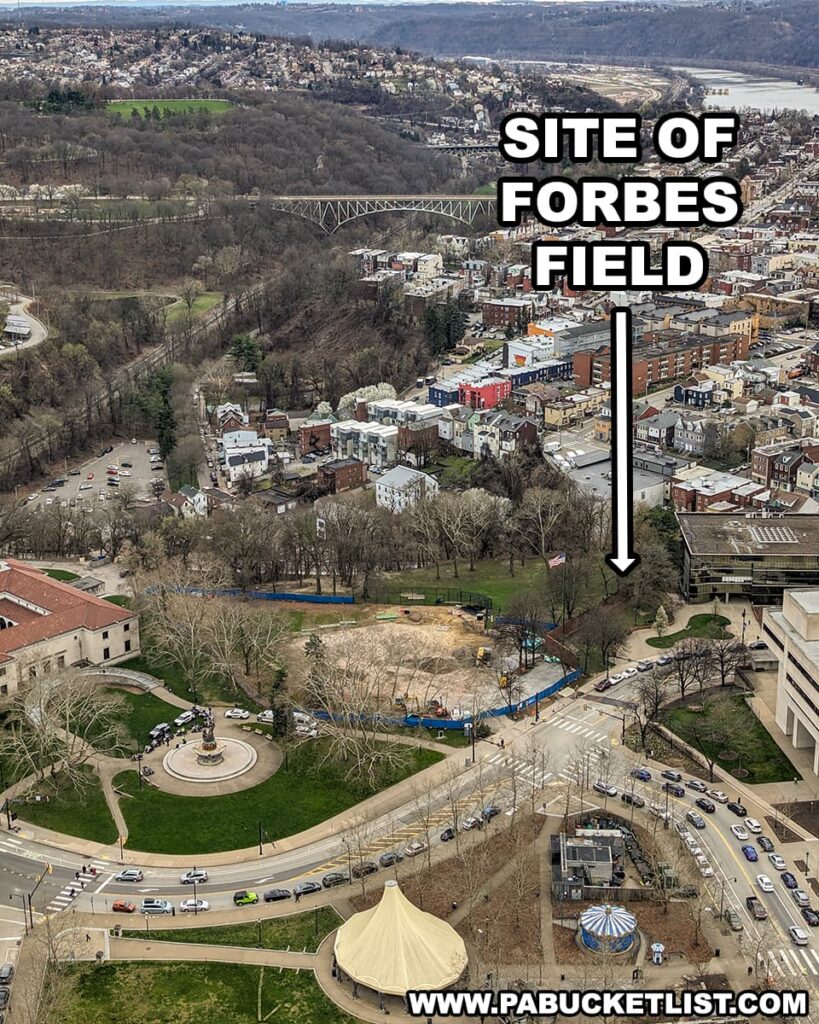
In case you’re unsure which building the Cathedral of Learning is (or “Cathy”, as it’s referred to by Pitt students), it’s this towering structure.
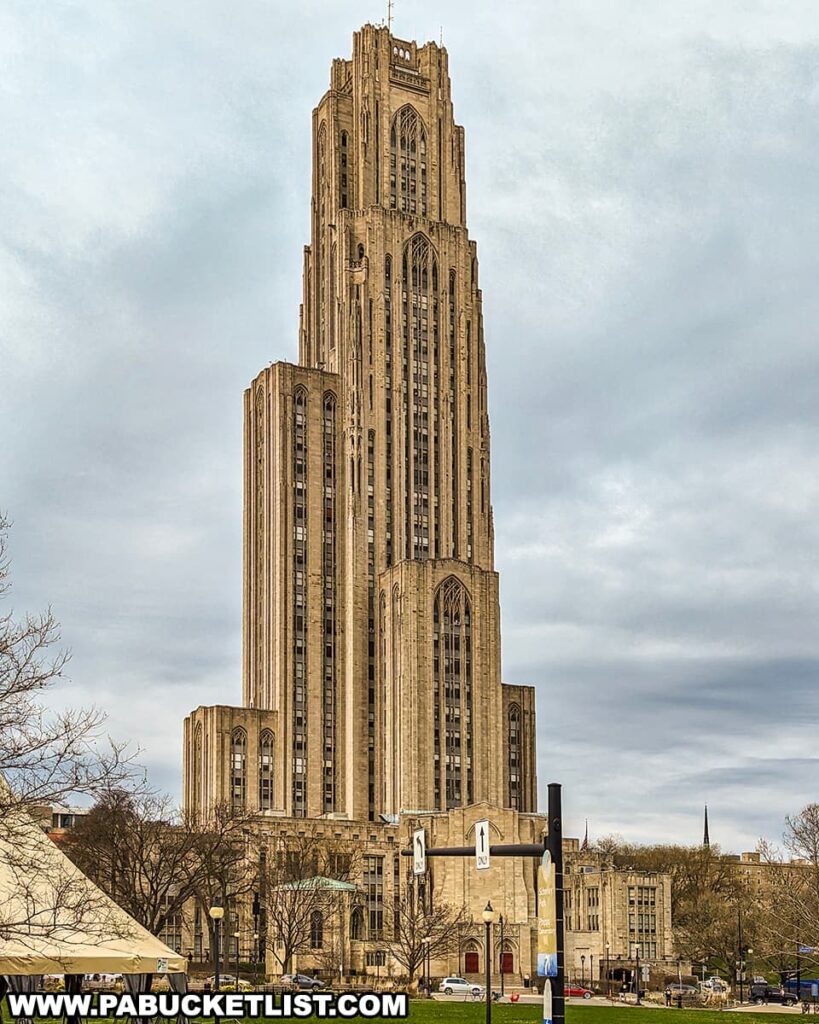
While you’re up there, check out the views in all the directions to see some other famous Pittsburgh landmarks.
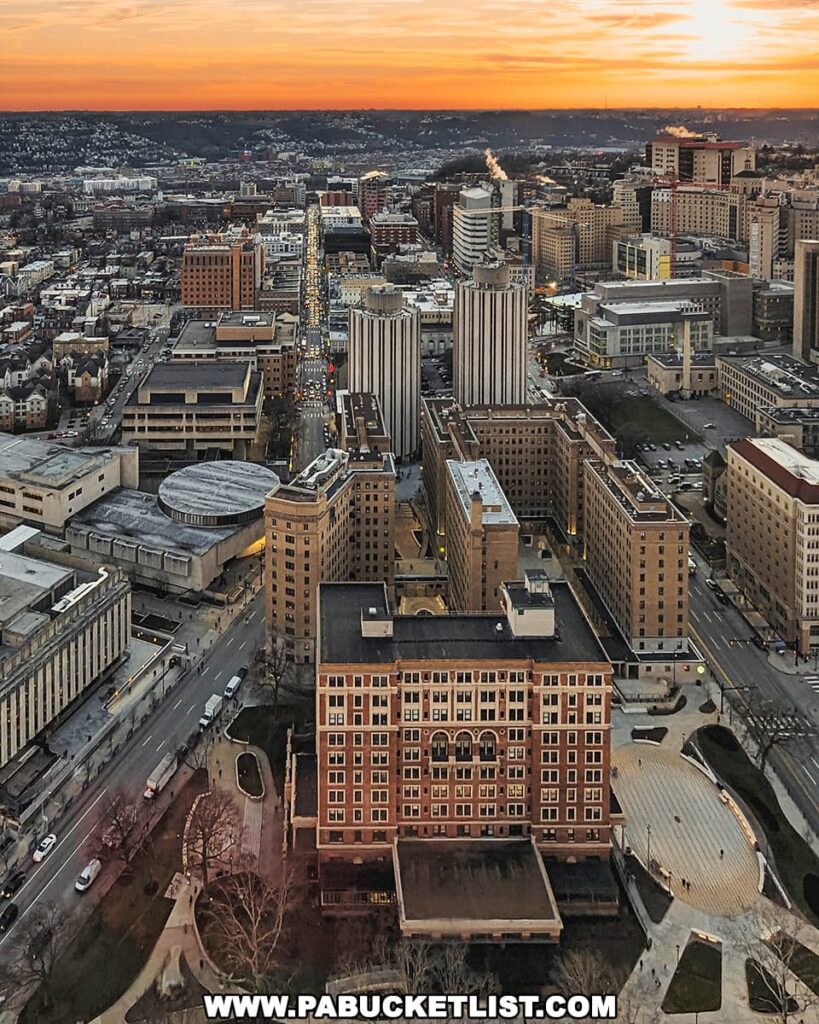
To the northwest you have the Soldiers & Sailors Memorial Hall and Museum, dedicated in 1910, one year after Forbes Field opened.
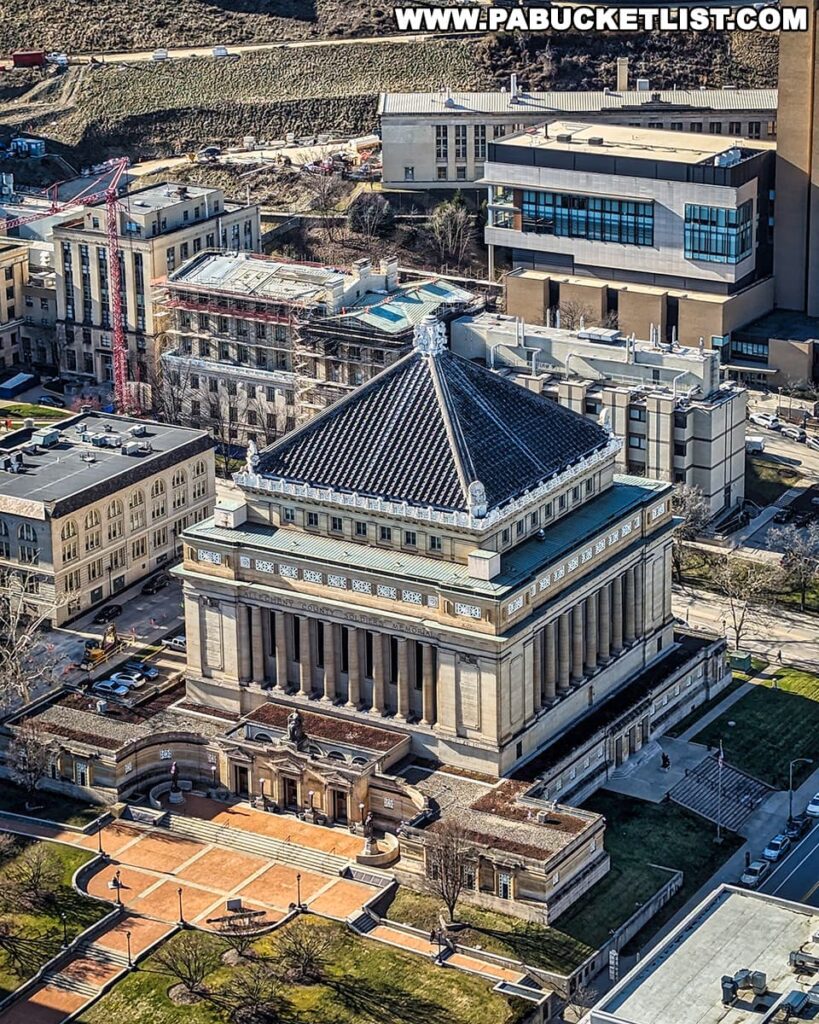
To the southeast you have the Carnegie Museums of Art and Natural History, with Carnegie Mellon University just beyond that.
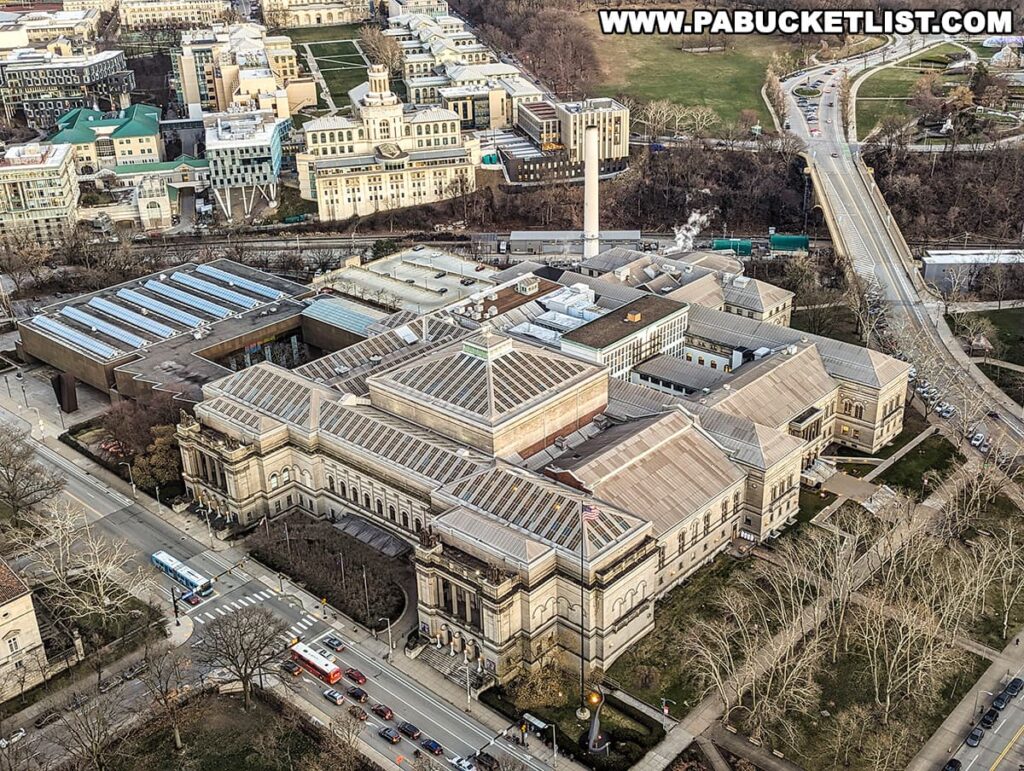
Remnants of Forbes Field at PNC Park
If you head downtown to the Pirates current home at PNC Park, you’ll find perhaps the most famous remnant of Forbes Field, that being the original section of the wall cleared by Bill Mazeroski’s Game 7 World Series-winning homer in 1960.
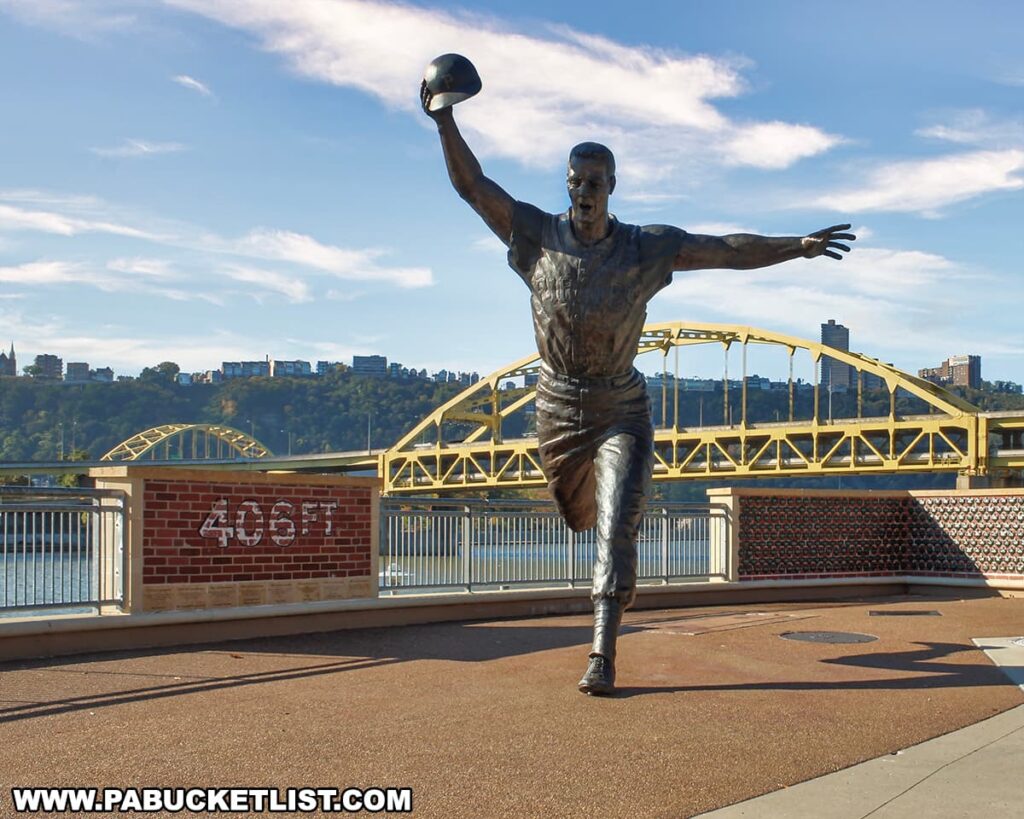
Described by ESPN as “the greatest home run of all time”, it is still the only time a World Series Game 7 has ended with a walk-off home run.
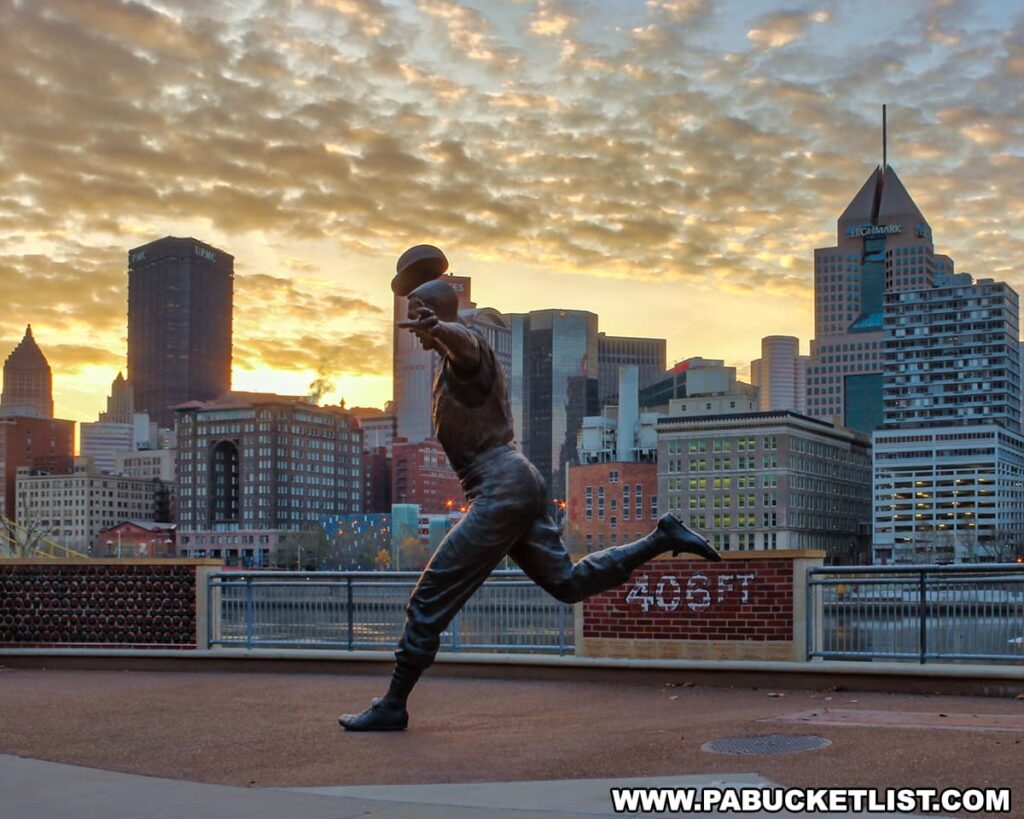
In the bottom of the 9th, with the game tied at 9-9 Mazeroski (wearing number 9) hit a 1-0 fastball over the 406 FT marker in left-center field, clinching the World Series for the Pirates over the heavily-favored New York Yankees.
You’ll find this tribute to Bill Mazeroski and Forbes Field on the Riverwalk outside the stadium.
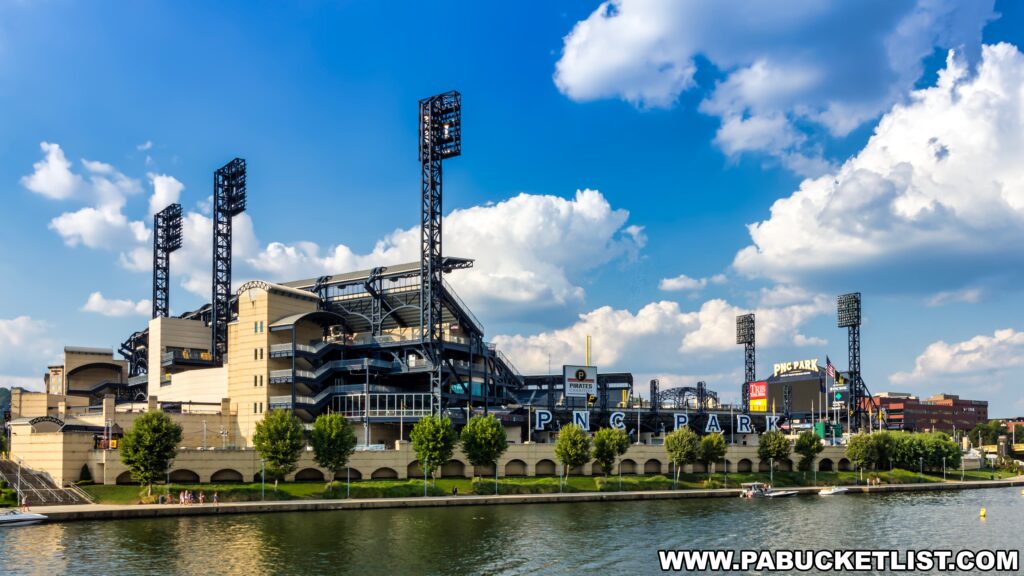
A statue of Honus Wagner (another Pirates legend) which once stood adjacent to Forbes Field has also been relocated to PNC Park, and stands at the home plate entrance.
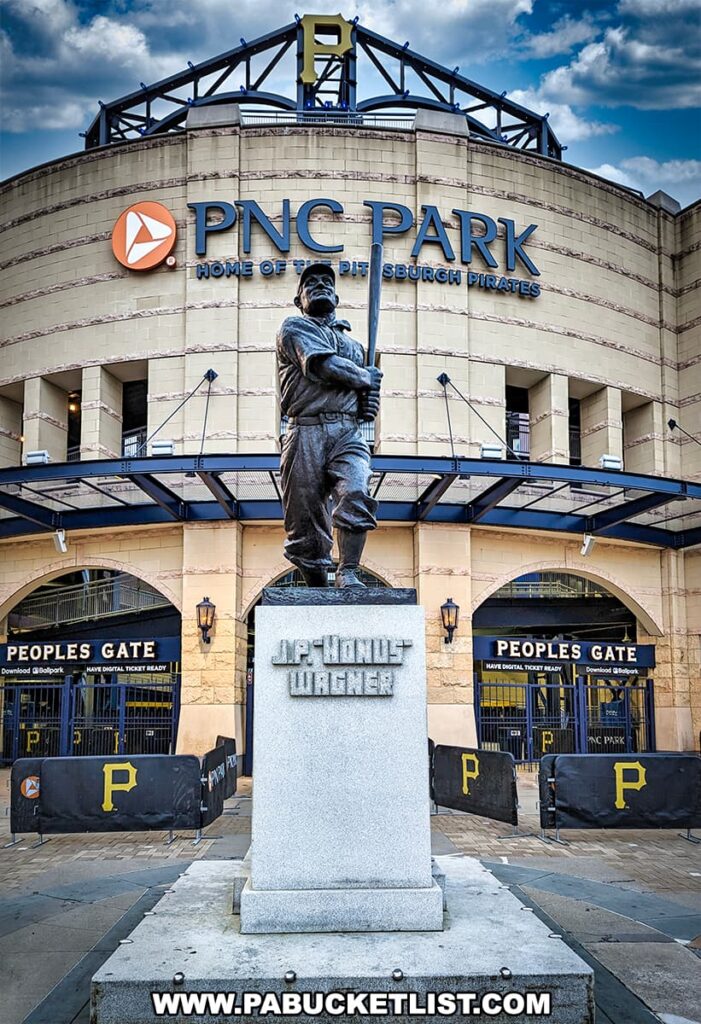
Baseball fans will also appreciate this historical marker along the Riverwalk near PNC Park, commemorating the first modern World Series which took place between Boston and Pittsburgh in 1903.
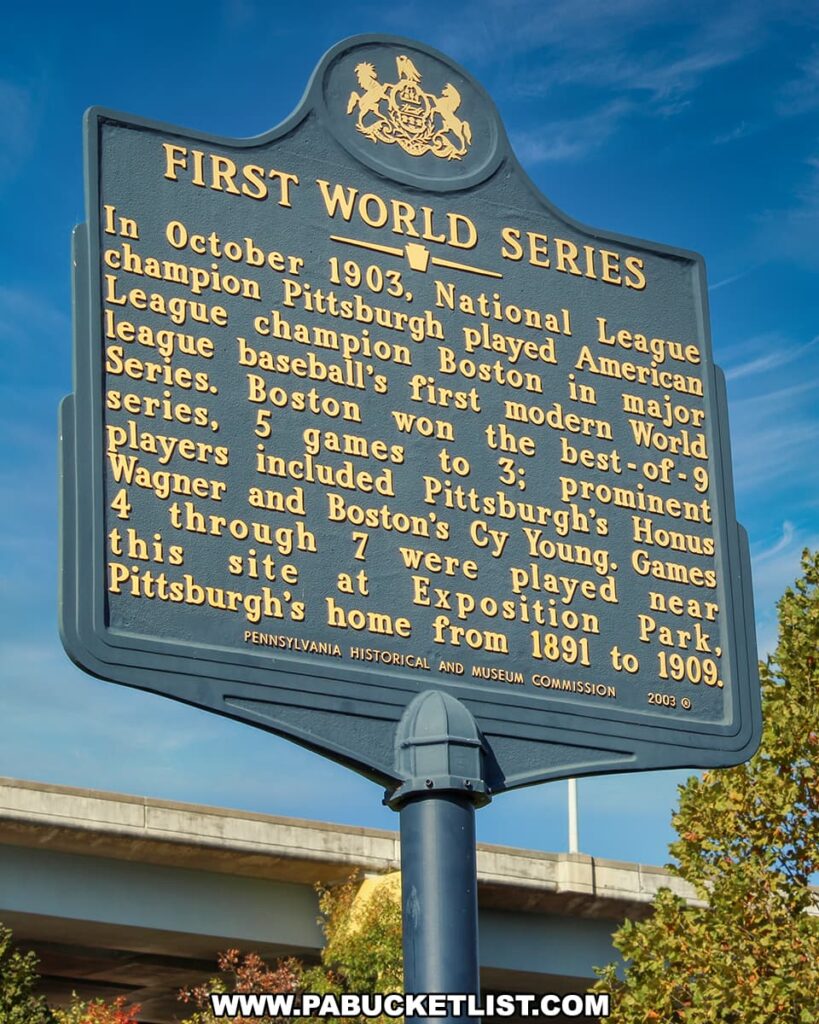
Final Thoughts
While there isn’t a great deal left of the original Forbes Field, baseball enthusiasts and history buffs alike will enjoy a pilgrimage to this spot where so many magical sports moments took place.

Reference the map below to find and enjoy the spots mentioned in this article.
Nearby Attractions
26 Must-See Attractions in Allegheny County is your guide to dozens of the best things to do in and around Pittsburgh!
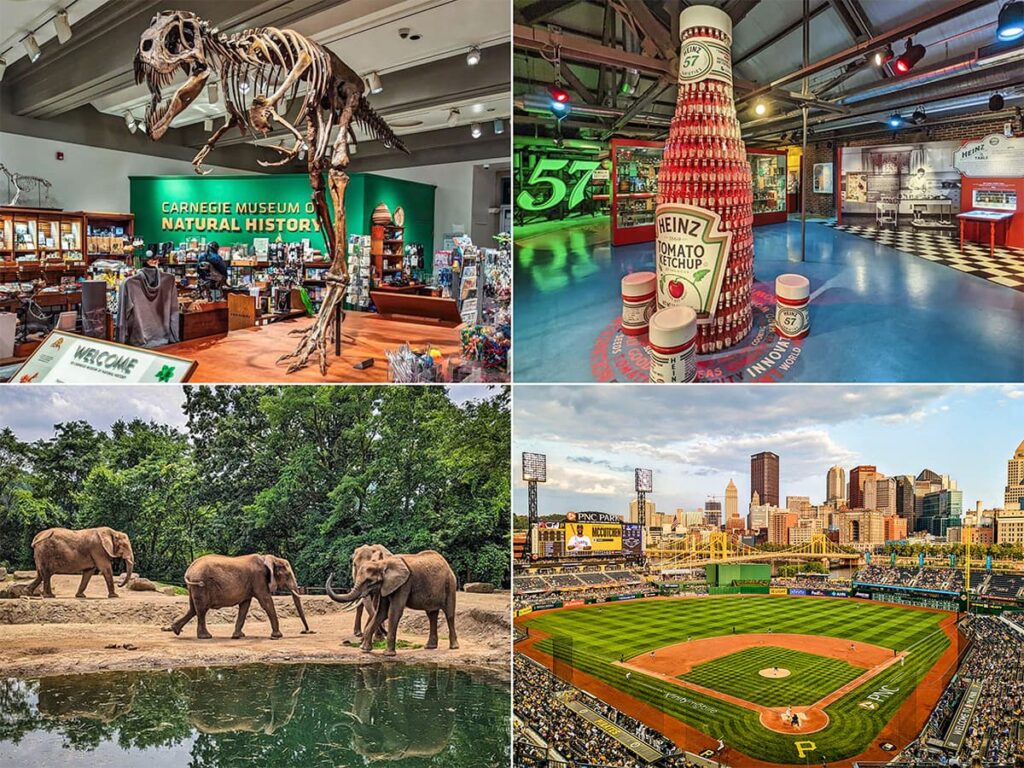
Did you enjoy this article?
If so, be sure to like and follow PA Bucket List on Facebook, Instagram, and/or Pinterest to learn more about the best things to see and do in Pennsylvania!
Click on any of the icons below to get connected to PA Bucket List on social media.


